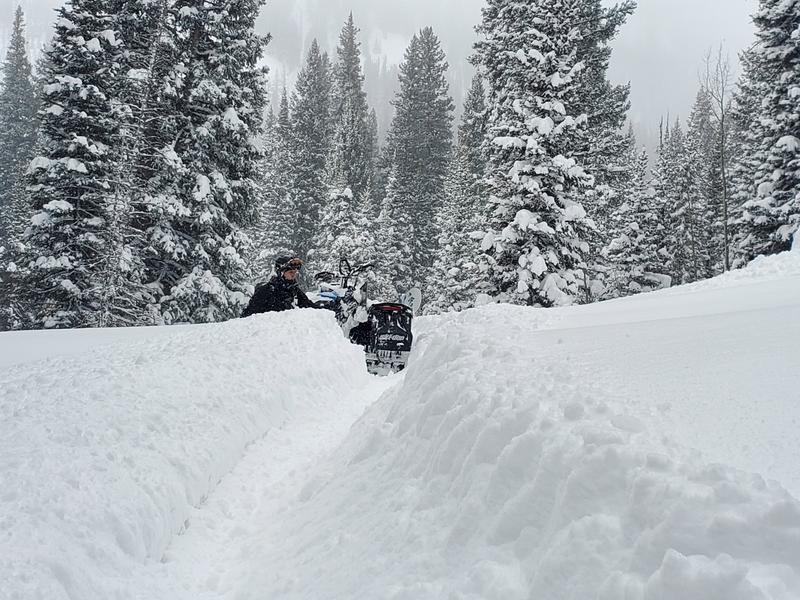Our annual party and fundraiser is coming up on December 6 in Logan at the Cache. 19th Annual Utah Avalanche Center Pray for Snow Party and Fundraiser information and tickets
HERE.
Join the Utah Avalanche Center and the Division of Outdoor Recreation to celebrate the Fourth Annual Avalanche Awareness week, from December 4 - December 11. Click
HERE to view the full list of events for the week.
Dangerous avalanche conditions exist in the backcountry. Heavy snow and drifting overloaded widespread slopes with buried persistent weak layers and poor snow structure. Dangerous human triggered avalanches are likely on drifted upper and mid elevation slopes. Several parties reported triggering heart-stopping audible collapses or "wumpfs" and shooting cracks yesterday as they traveled through the new snow at mid and upper elevations above Bear Lake in the Garden City Canyon Area. These are "bulls-eye" red flags indicating unstable snow and real potential for dangerous slab avalanches failing on a persistent weak layer.
Remote mountain weather stations report around a foot of new snow from yesterday morning's storm, and around 1" Snow Water Equivalent or SWE. The wind is now blowing from the southwest around 25 mph with 40 mph gusts, and it's 16° F at the CSI weather station on Logan Peak at 9700'. I'm reading 11° F at the Franklin Basin Snotel site at 8100'.
Today will be partly sunny in the mountains, with high temperatures at 8500' around 25° F. Expect 10 to 15 mph south-southwest winds and wind chill values as low as -6° F. Clouds and southwest winds will increase tonight ahead of the next, somewhat less intense, storm. Snow is expected tomorrow and tomorrow night with another 6" to a foot of accumulation possible on upper elevation slopes by Monday morning.
Observers report very deep ( almost too deep) powder riding conditions at upper elevations in the Bear River Range, but there are still many shallowly buried land mines (rocks) out there lurking under the light powder. (Flygare, 12-2-22). Dangerous avalanche conditions dictate staying off of and out from under steep slopes. (steeper than 30°)
Local observers report many red flags indicating unstable snow, but as yet no large or significant avalanches were reported in the Logan Zone. I noticed a little bit of natural storm slab activity on lower elevation slopes in Logan Canyon yesterday, and observers report triggering small soft slabs in Providence Canyon on Tuesday.
Numerous human triggered avalanches were reported from yesterday in the Wasatch and Western Uinta ranges, and thankfully, no accidents.
See our updated list of observed avalanches from across Utah
HERE 











